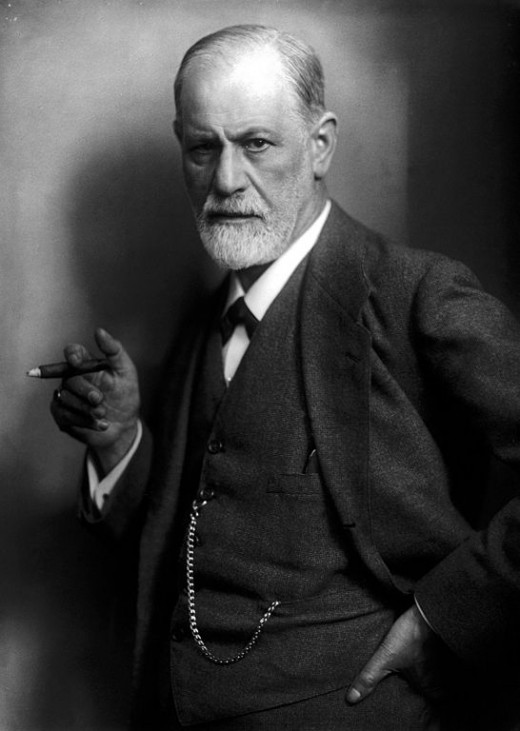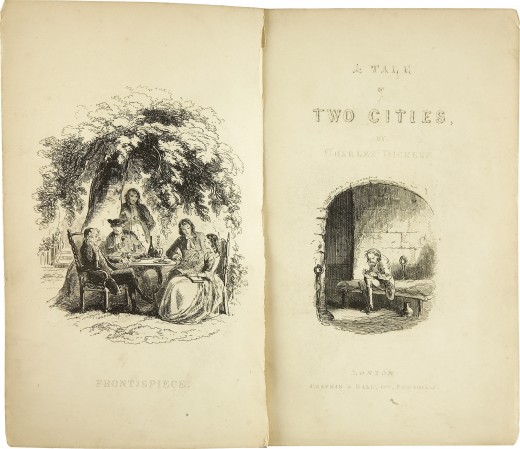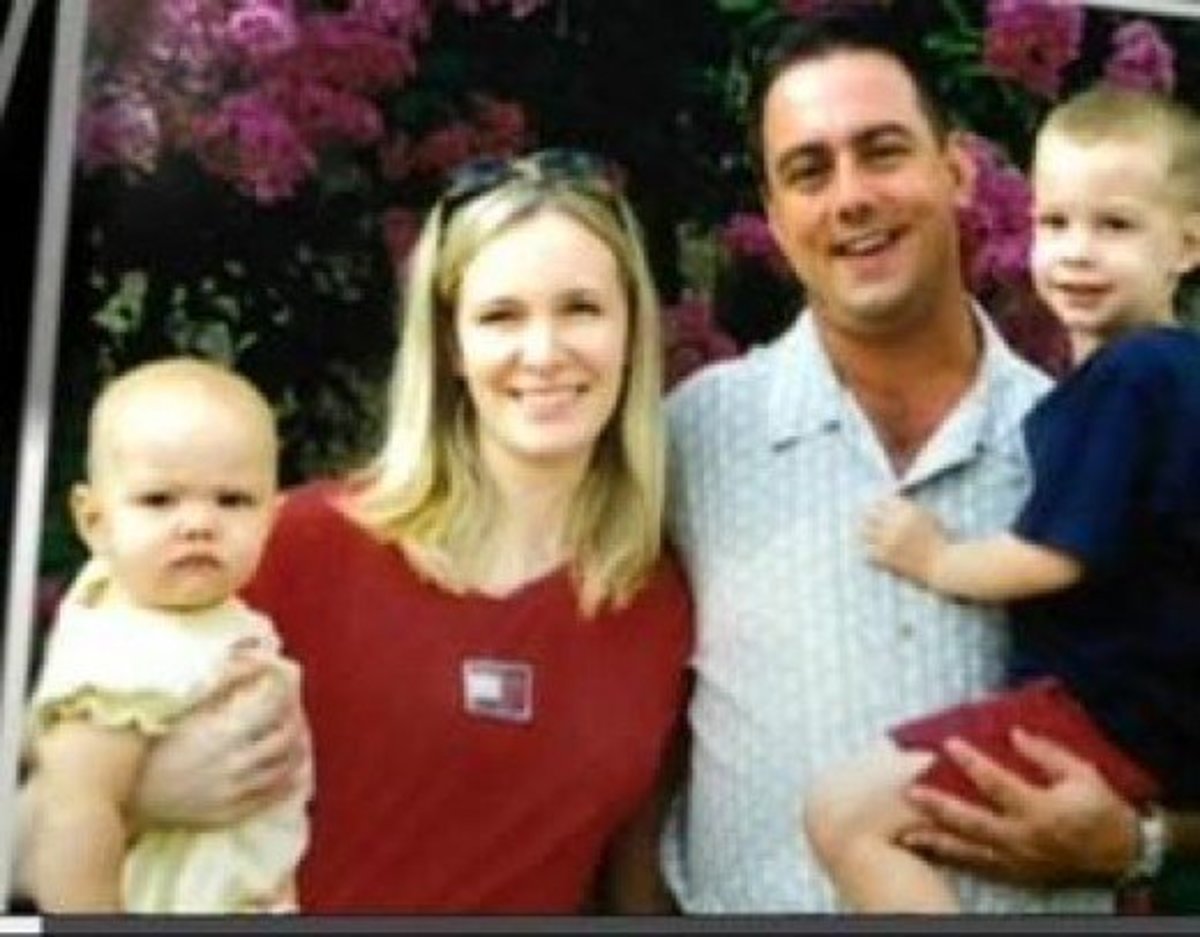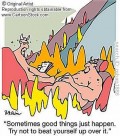Memory Repression: A Controversial Topic in Psychology
Have you ever heard of memory repression?

The First Case of Memory Repression - The Murder of Susan Kay Nason
In 1990, in Redwood City, California, George Franklin, Sr., 51, became the suspect in the murder of Susan Kay Nason, who was then 8 years old, more than 20 years ago.
Franklin's daughter, Eileen, is the one who reported her father to the authorities and provided evidence against her father. The strange thing about this case is Eileen's memory only came back after many years later.
His memory returned decades later when Eileen was nursing her baby on the couch with her daughter, Jessica, and her friend coloring a picture book on the floor. The memory of the murder returned the moment Jessica looked at her and asked her a question. Eileen was suddenly staring into Susan Kay Nason's blue eyes a second before her head was hit by a rock.
The memory is followed by another terrifying realization. The killer who hit his friend's head was his own father.
"I saw my father approaching Susan, his hands above his head, a rock in his hands. I screamed. I yelled . . . I heard two blows, " Eileen said as she gave testimony in the courtroom. The memory was hidden for 20 years because Eileen was threatened to be killed too if she dared to say anything so Eileen was frightened and her brain automatically hid the memory and just returned in 1989. "I was terrified. I absolutely believed him.” She said.
Eileen also recalled that since the incident, she could not even spell simple words, her performance declined, and she was always hiding in the closet. Since then, she has never been friends with anyone.
Although the truth of Eileen's story is still in doubt, the judge decided that Eileen's father, George Franklin, Sr., was found guilty of the murder of Susan Kay Nason. The question is, why is memory repression possible? And is that something real or just a mere imagination?
Is it real?
Many people claim that they recall a traumatic childhood after therapy or déjà vu - a condition in which a person feels that he has experienced a particular incident after smelling or seeing or being in a certain place. Although it is uncertain whether it is really a memory repression or a condition called false memory syndrome, so far there are 53 legal cases regarding the return of a memory after memory repression.
Memory repression is a mystery and a controversial topic in the world of psychology. Moreover, this topic is not widely known by the public and there is no way to know the truth. The statements put forward by the victim could be true or wrong. Maybe Eileen's long lost memory is really back or it could be the claimsthat are made based on a very realistic imagination. For this reason, memory repression is a controversial topic.
In addition to Susan Kay Nason's case, another 1991 case of memory repression was published via People's Magazine entitled "A Star Cries Incest" - a case that tells Rosseanne Barr Arnold, an actress, who was molested by her mother at the age of 6 or 7. Another case came from Miss America, Marilyn Van Derbur, who had buried his memory of his father's sexual abuse until the age of 24 by People's Magazine ("The Darkest Secret") and finally, exposing the story after his father's death. Even so, we do not know exactly if they are both just using the story to raise popularity or if it’s based on a true story. Other cases can be seen through the following famous articles: Washington Post (Oldenberg, 1991), the Los Angeles Times (Ritter, 1991), Seventeen (Dormen, 1991), Glamor (Edmiston, 1990), Newsweek (Kantrowitz, 1991), and Time (Toufexis, 1991).

Before the 20th century, there is no record of the cases. The term “memory repression” was first introduced by Sigmund Freud, a psychologist in the nineteenth century known through his work, Interpretation of Dreams. In 1896, his paper entitled Zur Ätiologie der Hysterie ("On the etiology of hysteria") was published. One of the cases studied was the case of Anna O, who was paralyzed on the right side of her body. Freud states that it is due to the psychic trauma that arises in the form of illness and treats it with the method of hypnosis. According to research, Anna can move a little right after the treatment.
Each individual has a variety of defense mechanisms. The defense mechanism is a defense reaction or self-protection against traumatic events. The defense mechanism comes in various forms: memory repression, regression, suppression, and so forth. But what we will discuss today is the repression of memory. Memory repression is defined as a condition in which a memory is blocked by the subconscious because the memory is associated with high stress or traumatic events and may occasionally return within a certain period of time. This is done so that the victim does not keep remembering the traumatic event. This theory speculates that while the memory is hidden and the victim has no memory of the traumatic event, the trauma can still have an impact on the attitudes and behavior of the victim. This theory also states that one's memory is never completely lost, just hidden.
Sometimes, we cannot ascertain whether the repressed memory actually returns or our brain creates that memory and believes it as something real known as false memory syndrome. However, the returning memory is not entirely accurate and there may be some details that change at any time. For example Eileen's testimony about Susan Kay Nason's murder case changed several times. First, she said that the murder took place in the morning. Later on, she stated that the killing took place during the day. In addition, there are other testimonies that vary from Eileen's testimony. Initially, the hidden memory will return in the form of a dissociative mental impression based on the research of Van der Kolk and Fisler. These impressions are the sensory elements of the traumatic memory. For example, when we are in situations similar to those events or smell similar to those events, it can trigger the return of long-lost memories. The causes of memory repression vary, such as verbal and nonverbal violence, but the most frequent cases are cases where the victim is sexually harassed by a family member, such as his father. Susan Kay Nason's case also relates to sexual violence. According to Eileen, his father had raped his late friend before killing him. There are many cases related to sexual harassment and memory repression. This theory of memory repression also speculates that people who have such traumatic memories usually exhibit destructive or psychiatric behaviors such as PTSD (Post Traumatic Stress Disorder), OCD (Obsessive Compulsive Disorder), often choking without cause, lack of confidence, not good at socializing, aggressive, eating disorder like bulimia, low self-esteem, frequent nightmares, showing aggressive behavior, self-harm and so on. Perhaps this is because the subconscious mind of the victim is disturbed. Other common traits shown by people suffering from memory repression are depersonalization (feeling separated from self) and derealization (having a perception that the surrounding environment is not real.)

Therefore, people who have psychological disorders should visit a psychologist for therapy or counseling. Hypnotherapy also helps to overcome these disorders. Sometimes, the memory associated with such traumatic events can also return by itself when the time is felt ready. Things related to events can also be a trigger. According to Freud, memory repression can be cured if the victim is able to recall and reconcile with his past. Slowly, the signs will start to disappear.
The problem is whether this phenomenon is true or not. As already mentioned, the memory associated with traumatic events that can be recalled can be just false memory syndrome. Certain people may is the phenomenon of memory repression for things that benefit them. In addition, the returning memory can’t be trusted 100% because the memory has undergone a slight change. For example, we can see from Eileen's testimony that often changes. Indeed, memory repression cannot come back at once, there will usually be other memories that follow.
Prof. Harrison Pope, co-director of the Biological Psychiatry Laboratory at Harvard University decided to investigate the truth of memory repression through fictional works that had been published in antiquity. He tried to find the earliest records of memory repression. Usually, events related to unexplained things are incorporated into ancient works of fiction such as the example of the classical fiction work Phantom of the Opera containing the occult and Lady Macbeth by William Shakespeare. The earliest records of memory repression are in the story of Charles Dickens, Tale of Two Cities. Then,
Since Tale of Two Cities are published in modern times, Pope decided to award $1000 for people who could find fictional works related to the repression of memory in 1800. Finally the work of fiction is found in the opera titled "Nina" or "The Girl Driven by Mad Love" in 1786 in France. The Opera tells a girl named Nina who loves a man named Germuil but his father wants Nina to choose another man. Nina believes that her rival has killed Germuil in a duel between them and suffered trauma-related amnesia. But even though it has been discovered, the concept of memory controversy remains controversial. In addition, the memory repression is emerging in the era of the 80s when Hollywood use memory repression as an ideal dramatic device. There is also an argument that states that people in ancient times were very closed and thought these things were so taboo that no one dared to talk about them. Even if some do, the rare media coverage makes people unaware of them. The position of women and children is also only at a level higher than the poor and in ancient times, child abuse often occurred. Therefore, looking for evidence of memory repression in pre-modern times is very difficult. The theory of memory repression is still under investigation to date and if anyone reports sexual harassment, the court continues to take it seriously. Of course the court is not reckless in responding. There are still psychiatrists who will keep an eye on the person who has reported the incident. The background of the person who has reported is also seen. Another way of dealing with this problem is to look at the common signs of people suffering from memory repression. Whether the person is experiencing a psychological disorder or shows a rather disturbing and unusual behavior and so forth. It can be used as a reference to determine whether a person is actually experiencing memory repression.
Regardless of that, if any of you feels something is missing when you're young and you show the attitudes I mentioned earlier, it's a good idea to visit a psychologist. Although the attitudes and behaviors I have mentioned reflect those who suffer from memory repression, it does not rule out the possibility of becoming a sign of other psychological disorders such as depression, anxiety, and so on. The theory of memory repression is still doubtful and Freud's theory has not been completely verified. We are still examining the phenomenon of memory repression. Let’s hope for the best, shall we?









